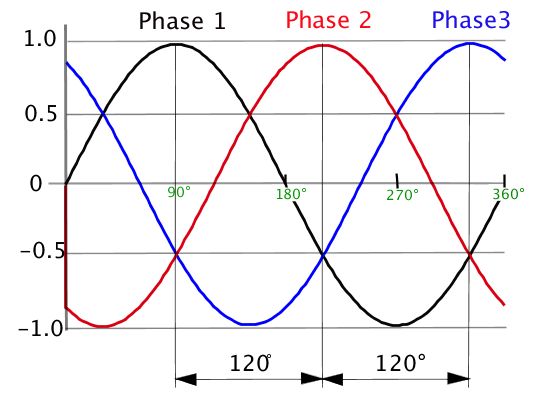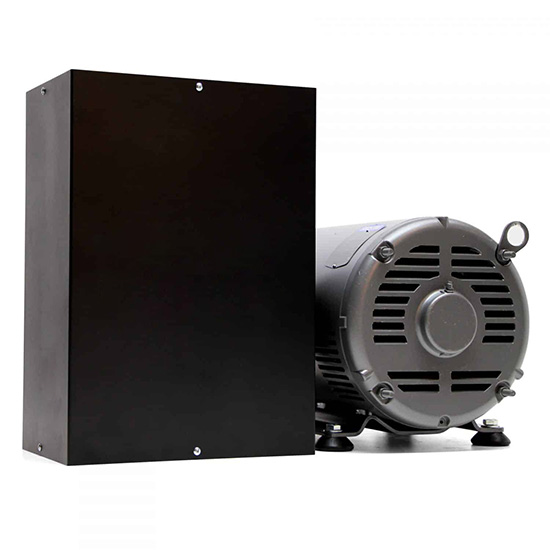There are several methods to operating a three-phase motor using single-phase power to make what would be an otherwise expensive and arduous process a little easier.
Three-phase power involves three symmetrical sine waves that are 120 electrical degrees out of phase with one another (See Figure 1). One method of converting single-phase power that worked well for decades was connecting two phases to the incoming 220 V single-phase power and create a “phantom leg” for the third phase by using capacitors to force an offset between the main and auxiliary windings. In this case, the offset is 90 electrical degrees.

For this method, the capacitors must be appropriately sized for the load. The current will be unbalanced if it isn’t. Rather than the 120-deg phase shift depicted in the lower half of Figure 1, the incorrect pairing of the capacitor and load may result in a large deviation. The bigger the discrepancy, the lower the torque.
Rotary phase converter method
Another viable method is with a rotary phase converter (see Figure 2). A wood shop, for instance, might use a rotary phase converter to run several three-phase machines on a single-phase power input. One drawback is that the process can be very expensive during the entire time the rotary phase is converting, regardless of whether any machinery is being used. The current might be balanced when specific machinery is running, but if few machines are operating, or all of them are heavily loaded, the three-phase power—current and voltage—is drastically unbalanced. Yet ATO’s rotary phase converters get rid of this trouble.

Variable frequency drive method
A variable frequency drive (VFD) rectifies each pair of phases to dc and inverts the dc to the power for the three-phase output, which means a VFD can be used with single-phase input to operate a three-phase motor. Manufacturer support varies, and it is cautiously recommended to derate the drive by 1 divided by the square root of 3 (about 58%). Also note that the hp/kW VFD rating is there for convenience in sizing drives since they’re rated by current. For example, a 10 hp (7.5 kW) motor would use a VFD rated for 15 hp (11 kW). It is strongly recommended for the user to work with the drive manufacturer in selecting and sizing the VFD for this use.

Compressors, machine shop and woodworking equipment and decorative fountains are good candidates for this method. Rather than buying an expensive single-phase motor, changing the controls and dealing with speed control and starting torque issues, it is a better idea to use a VFD to operate the existing motor from single-phase power. For many applications up to 5 hp (4 kW), a suitable VFD can be purchased for far less than the cost of rewinding a three-phase motor and providing the necessary controls to operate it.
The additional benefits are that a three-phase motor is usually less expensive to buy, the controls do not require replacement or modification, and the VFD has the value-added bonus of providing speed control. Best of all, you don’t have to ruin a weekend helping someone who does not fully understand just what it is you do.
